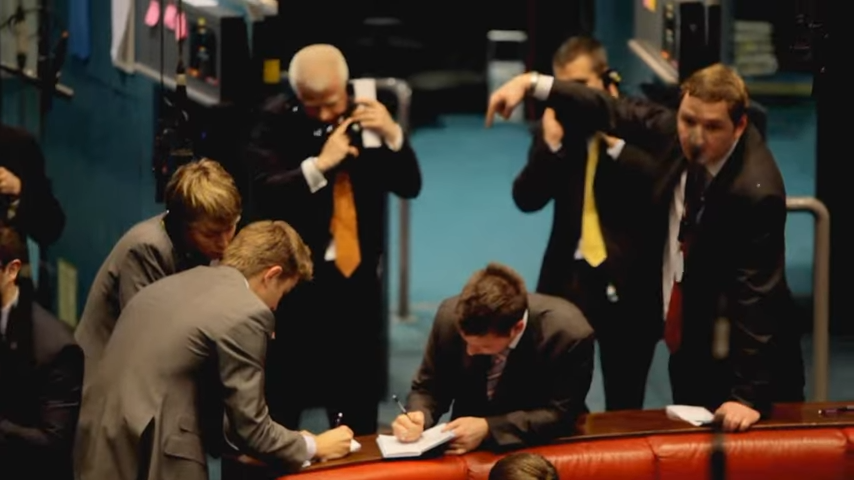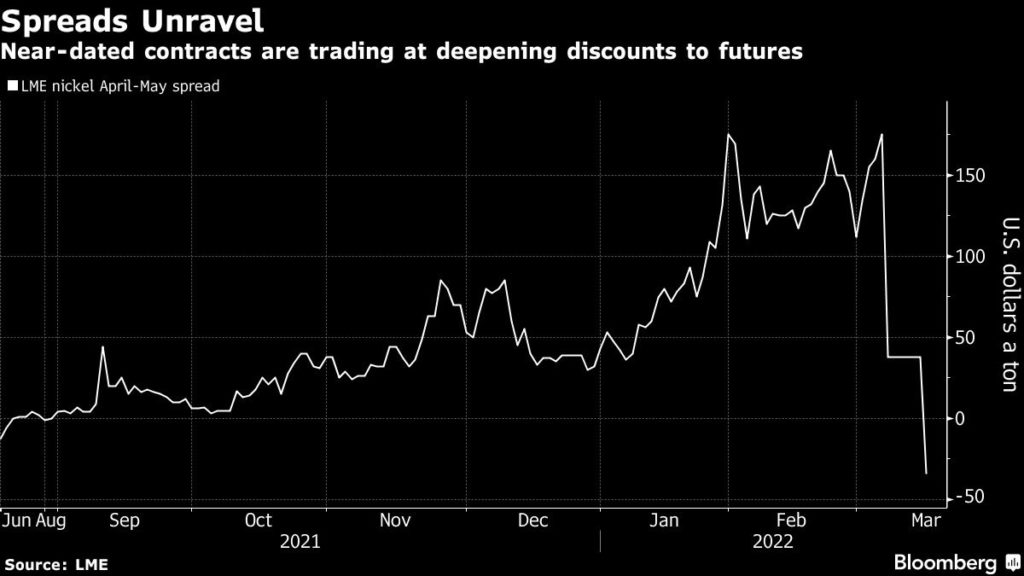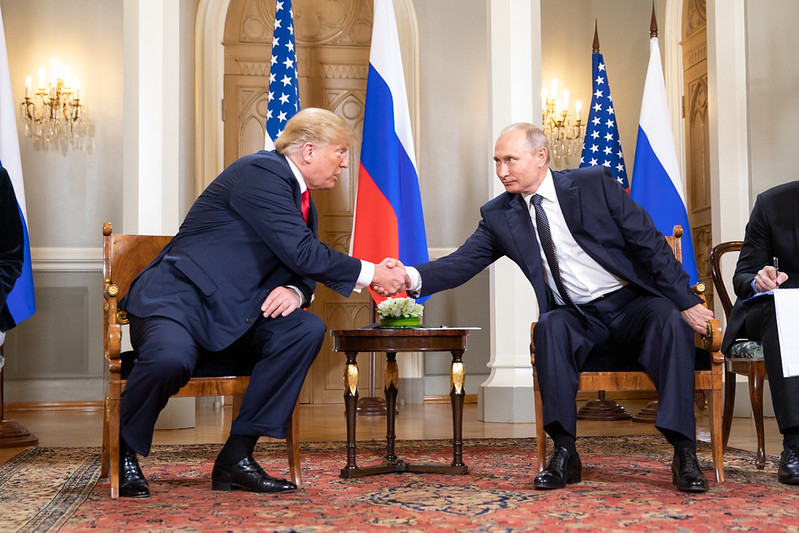Nickel price chaos continues – LME trading halted after only 1,236 tonnes change hands

The London Metal Exchange temporarily froze electronic trading in nickel after it restarted from a week-long suspension, as a glitch allowed prices to plunge past a new daily limit that was supposed to help restore order following last week’s historic short squeeze.
The market reopened for the second time at 2 p.m. London time, but without any trading. The forced halt is an embarrassing setback for the 145-year-old exchange, which is the world’s main venue for setting prices and trading some of the most important industrial metals.
The turmoil in nickel has plunged the metals industry into chaos and the LME was already facing widespread anger for its decisions to suspend the market and cancel several hours of trades last week after a massive price spike.
Trading briefly restarted at 8 a.m. on Wednesday and nickel futures immediately fell through the daily limit before the market was suspended again. The exchange said it halted electronic trading to investigate the problem and will cancel a “small number” of transactions. A phone-based trading system and the LME’s open-outcry floor were unaffected, with prices in “the Ring” dropping by the limit as well.
Debacle
“What a debacle,” said Ole Hansen, head of commodities strategy at Saxo Bank A/s. “The LME is not doing itself any favors.”
For the nickel market, the drop in prices is a sign that last week’s historic short squeeze is easing. It narrows the gap between contracts on the LME and those on Shanghai Futures Exchange, which have continued trading during the suspension. Last Tuesday’s historic decision to halt trading came after spiraling prices left some brokers scrambling to pay huge margin calls against bearish positions held by top producer Tsingshan Group Holding Co.

[Click here for an interactive chart of nickel prices]
The immediate drop on Wednesday reflects how holders of long positions were looking to get out of a market “that has become and is likely to remain dysfunctional,” Marex’s Alastair Munro said in a note.
The LME said in an early-afternoon notice it’s assessing whether to increase the limit for Thursday’s trading, to help the market reach a “true” price more quickly.
Most analysts and traders in a Bloomberg survey had predicted that prices would drop by the new limit when the market reopened, after Tsingshan reached a deal with its banks to prevent margin calls.
Existential problem
But several brokers said they were reluctant to take on new short positions given the huge margin calls seen last week. And some hedge fund managers, including both metal market veterans and generalist investors, have said they are either walking away from the LME or significantly reducing their trading in the wake of the nickel chaos.
“Liquidity will continue to diminish. Anyone thinking about stepping in to deliver liquidity to the market will certainly think twice,” said Keith Wildie, head of trading at Romco Metals. “I don’t think this is a market problem, I think it’s an existential problem for the LME.”
Still, the electronic-trading issues could end up breathing fresh life into the LME’s open-outcry trading floor, which has shrunk in importance in recent years. The LME tried to close the Ring last year, but canceled the plan after a backlash from some of its members.
“It’s a time when the Ring really earns its salt as a venue for true price discovery,” Colin Hamilton, managing director for commodities research at BMO Capital Markets, said by phone from London.
$45,590
The LME announced it would reopen the nickel market this week after Tsingshan secured the standstill agreement with its banks. Commodities markets have been hit by a wave of selling since the LME halted trading to defuse the unprecedented rally that it said posed a systemic threat to its market, although other metals regained some ground on Wednesday.
Only 206 lots, or 1,236 tons of nickel, changed hands before the market stopped trading this morning within seconds on Wednesday morning. Most of those trades took place at the limit price of $45,590 a ton. Several trades appeared to be at prices below the 5% limit.
“In some sense it went as expected, in that we all expected it to fall, but it was just a question of how quickly,” Hamilton said.
(By Mark Burton and Jack Farchy, with assistance from Eddie Spence)
More News
Kazakh miner Solidcore reports profit jump on high gold prices
Solidcore, formerly Polymetal International, is the second-largest gold miner in Kazakhstan.
March 31, 2025 | 06:43 am
Russia, US start talks on rare earth metals projects in Russia, Putin envoy says
Putin has offered the US, under a future economic deal, to jointly explore Russia's rare earth metal deposits.
March 30, 2025 | 01:06 am
{{ commodity.name }}
{{ post.title }}
{{ post.excerpt }}
{{ post.date }}



Comments